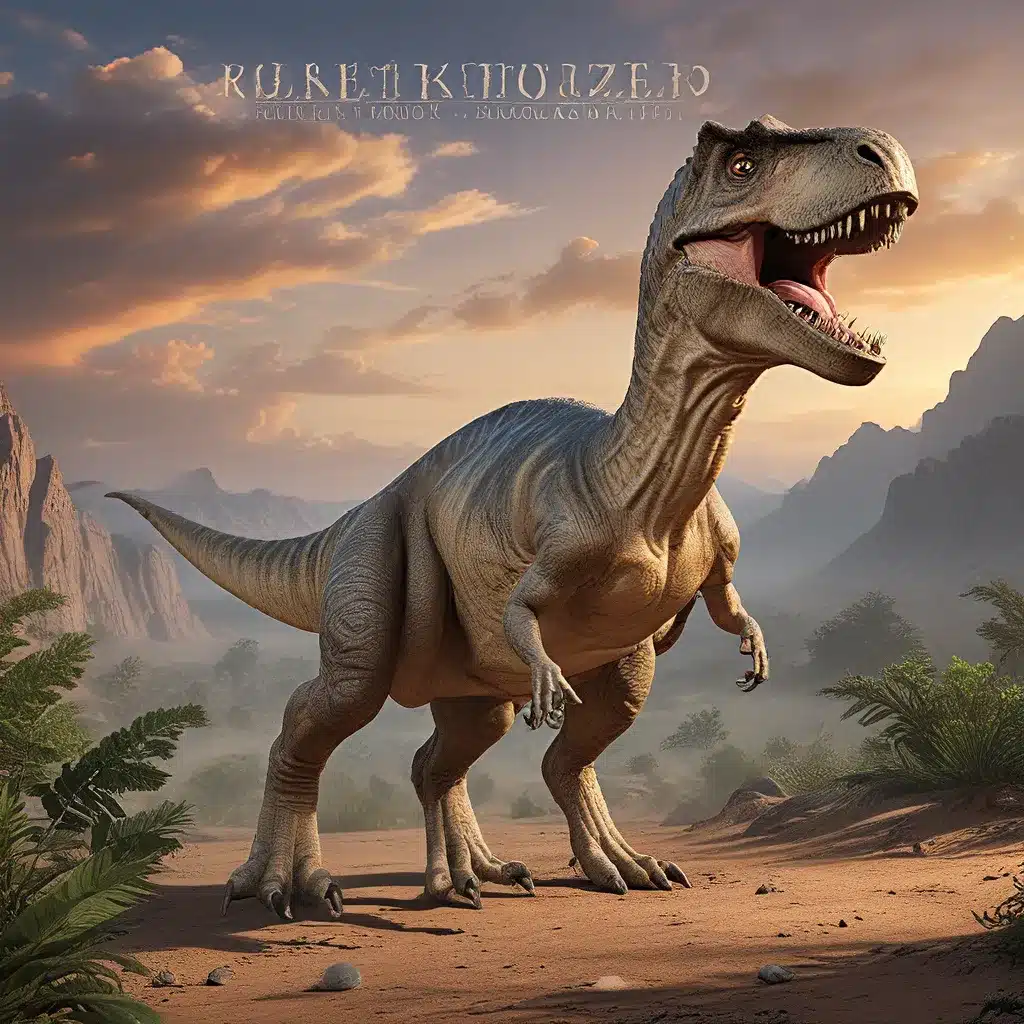
The Enigmatic Origins of Dinosaurs
Dinosaurs have captivated the human imagination for centuries, standing as awe-inspiring remnants of a bygone era. Paleontology, the study of ancient life, has unraveled the aeons-long story of these remarkable creatures, revealing their remarkable diversity, evolutionary adaptations, and the mysteries that still shroud their origins.
The very first dinosaurs emerged during the Late Triassic period, approximately 225 million years ago, as a group of reptiles known as archosaurs. These early dinosaurs were diverse, ranging from small bipedal species to massive quadrupedal forms, each adapted to their own unique ecological niches. The rise of the dinosaurs was a gradual process, with these ancient reptiles gradually outcompeting their contemporaries and establishing dominance across the Mesozoic Era, a span of over 180 million years.
Interestingly, the earliest dinosaurs were not the colossal, apex predators that often come to mind when we think of these prehistoric titans. Instead, many of the first dinosaurs were relatively small, omnivorous or herbivorous creatures, with the larger, more specialized species emerging later in the Jurassic and Cretaceous periods. This evolutionary progression is a testament to the adaptability and resilience of these remarkable creatures, as they diversified to fill a wide range of ecological roles.
Uncovering the Secrets of Dinosaur Anatomy and Behavior
One of the key aspects of paleontological research is the study of dinosaur anatomy and behavior, which has yielded fascinating insights into the lives of these ancient creatures. Through the examination of fossil remains, scientists have been able to piece together the skeletal structures, musculature, and physiological adaptations of various dinosaur species, shedding light on their locomotion, feeding habits, and social interactions.
For example, the discovery of feathered dinosaurs, such as the Archaeopteryx, has challenged the traditional distinction between dinosaurs and birds, suggesting a closer evolutionary relationship between the two groups. Similarly, the examination of dinosaur footprints and trackways has provided valuable information about their movement patterns, herd behavior, and even parental care.
Moreover, the study of dinosaur nests and eggs has revealed intriguing details about their reproductive strategies, incubation periods, and nestling care. These findings have helped reconstruct the complex social and familial structures that may have existed among different dinosaur species, challenging the popular perception of these animals as solitary and aggressive**.
Uncovering Ancient Civilizations and their Connections to Dinosaurs
The fascination with dinosaurs extends beyond the scientific realm, as these prehistoric creatures have captivated the public imagination and influenced various aspects of human culture, including mythology, art, and literature.
In many ancient civilizations, dinosaur-like creatures were often revered or feared, and their fossils were sometimes incorporated into religious or cultural practices. For instance, in China, the discovery of dinosaur bones was often attributed to mythical creatures, such as the dragon, which were deeply ingrained in the cultural psyche.
Similarly, the discovery of large, fossilized bones in ancient Greece and Rome were sometimes interpreted as the remains of legendary heroes or mythical beasts, highlighting the enduring power of these prehistoric creatures to captivate the human mind.
As archaeological and paleontological research has advanced, scholars have uncovered intriguing connections between ancient civilizations and their understanding of dinosaurs and other prehistoric life. These findings have shed light on the evolving relationship between humans and the natural world, and the profound impact that ancient discoveries have had on our collective history and culture.
Unraveling the Mysteries of Dinosaur Extinction
One of the most captivating aspects of dinosaur research is the ongoing quest to understand the causes and mechanisms behind their ultimate demise. The extinction of the dinosaurs at the end of the Cretaceous period, approximately 66 million years ago, has been the subject of intense scientific debate and speculation.
The most widely accepted theory for the dinosaur extinction is the asteroid impact hypothesis, which suggests that a massive extraterrestrial object collided with the Earth, triggering a series of catastrophic environmental changes that devastated the global ecosystem and led to the downfall of the dinosaurs.
However, some researchers have proposed alternative explanations, such as volcanic eruptions, climate change, or a combination of factors, that may have contributed to the extinction of these prehistoric giants.
As new evidence and theories continue to emerge, the scientific community remains deeply engaged in unraveling the complex web of causes and events that ultimately led to the disappearance of the dinosaurs from the face of the Earth.
Preserving the Dinosaur Legacy for Future Generations
The enduring fascination with dinosaurs has inspired generations of scientists, educators, and enthusiasts to dedicate their lives to understanding and preserving the legacy of these prehistoric marvels.
Through ongoing paleontological research, museum exhibitions, and educational initiatives, the knowledge and appreciation of dinosaurs continues to grow, captivating audiences around the world.
As new discoveries and technological advancements uncover more about the lives and habitats of dinosaurs, the importance of protecting and preserving these ancient treasures becomes increasingly evident.
The Lost Kingdoms is committed to celebrating the remarkable history of dinosaurs and sharing the latest insights and discoveries with enthusiasts and scholars alike. By fostering a deeper understanding and appreciation for these incredible creatures, we can ensure that the legacy of the dinosaurs endures for generations to come.


